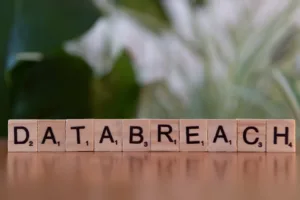
Summary: Ransom.MSIL.COBRALOCKER.AA represents a Windows-targeting ransomware strain first identified in January 2021, demonstrating low distribution but high damage potential. As part of the CobraLocker family, it typically arrives as a secondary payload from compromised systems or malicious downloads. While current infection rates remain limited according to threat intelligence feeds, its encryption capabilities and evolution into more sophisticated variants warrant defensive preparation.
Key Characteristics for Security Teams
This ransomware variant exhibits several notable technical characteristics that differentiate it from more widespread threats. The malware demonstrates typical file encryption behavior but stands out for its modular design and persistence mechanisms. Analysis of related variants shows increasing sophistication in deployment tactics and evasion techniques.
Security researchers at Trend Micro have documented the ransomware’s evolution, with later variants employing more advanced social engineering tactics. The initial AA variant serves as the foundation for these more dangerous iterations, sharing core functionality that makes it worthy of study.
Technical Analysis and Behavioral Patterns
The ransomware’s operational characteristics reveal a carefully constructed threat designed for persistence and impact. Examination of execution patterns shows consistent behavior across variants:
# Example registry modification for persistence (observed in CobraLocker.B variant)
HKEY_CURRENT_USER\Software\Microsoft\Windows\CurrentVersion\Run
"AmongUsHorrorEdition" = "%AppData%\malware.exe"Key behavioral aspects include process termination targeting security tools, hybrid cryptography implementation, and self-deletion after execution. These characteristics suggest developers focused on maximizing impact while minimizing detection windows.
Detection and Mitigation Strategies
For security operations teams, these indicators of compromise (IOCs) have been associated with CobraLocker variants:
| SHA-256 Hash | Detection Name |
|---|---|
| 88d55af8d84c1909e9ccf962e59f71dacf158eb9fd671920a23b7390103bd58f | Ransom.MSIL.COBRALOCKER.AA |
| ec621d94c847976baa8b3ead1bb98c2a0951432ba21181f09fb1c55dcddd98c3 | Ransom.MSIL.COBRALOCKER.AA |
Microsoft Defender detects related variants as Ransom:MSIL/CobraLocker.DD!MTB, with behavioral monitoring proving particularly effective against the self-deletion routine.
Operational Recommendations
The ransomware’s observed behavior creates specific defensive requirements for enterprise environments. Security teams should implement layered protections addressing each stage of the potential attack chain:
- Initial Access: Strengthen email filtering and web content inspection
- Execution Prevention: Implement application whitelisting and script control
- Impact Mitigation: Maintain offline backups following the 3-2-1 rule
Additional measures should include monitoring for registry modifications and restricting unnecessary PowerShell execution across endpoints.
Threat Assessment and Future Outlook
While Ransom.MSIL.COBRALOCKER.AA currently shows limited distribution, its technical capabilities and demonstrated evolution suggest potential for increased future impact. The ransomware’s low infection rate may reflect targeted attacks rather than widespread campaigns, making it particularly dangerous for specific industries or organizations.
Security teams should monitor for related IOCs and implement behavioral detection for similar MSIL-based threats. As documented by Trend Micro Research, the CobraLocker family continues to evolve, with newer variants demonstrating increased sophistication in both delivery mechanisms and encryption routines.
References
- Ransom.MSIL.COBRALOCKER.AA – Threat Encyclopedia. Trend Micro. [Accessed 2024-03-20].
- Centeno, R. et al. “New in Ransomware: Seth-Locker, Babuk Locker, Maoloa, TeslaCrypt, and CobraLocker”. Trend Micro Research, 2021-02-05. [Accessed 2024-03-20].
- “Ransom:MSIL/CobraLocker.DD!MTB threat description”. Microsoft. [Accessed 2024-03-20].





